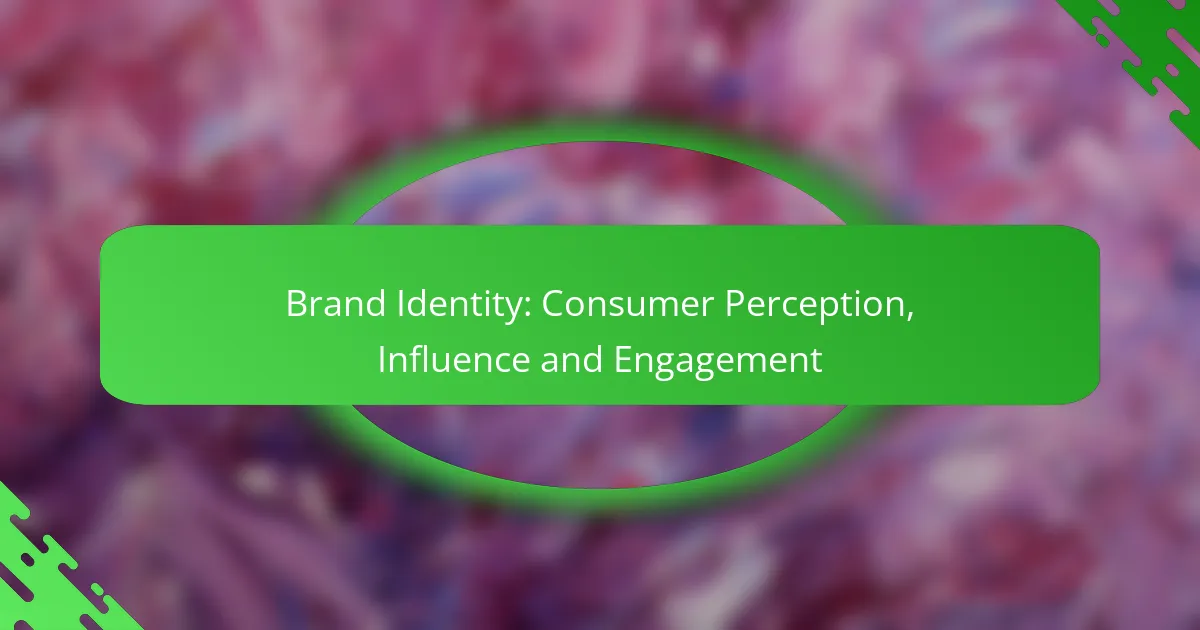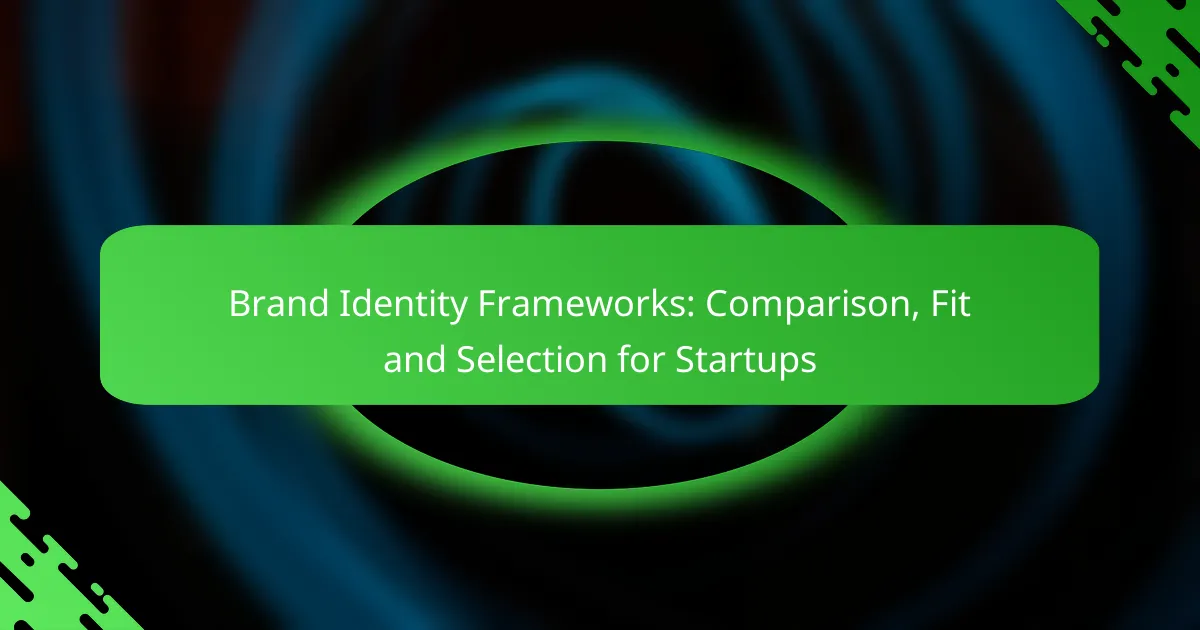Evaluating brand identity is crucial for understanding how effectively a brand connects with its audience. By analyzing success metrics and performance indicators such as customer engagement rates and brand recall, businesses can gain valuable insights into their market position and the effectiveness of their messaging. A strong brand identity not only enhances recognition but also drives customer trust and loyalty, ultimately influencing sales and conversions.

How to evaluate brand identity success metrics?
Evaluating brand identity success metrics involves analyzing various performance indicators that reflect how well a brand resonates with its audience. Key metrics include customer engagement rates, brand recall percentage, net promoter score, and social media sentiment analysis, each providing insights into different aspects of brand perception.
Customer engagement rates
Customer engagement rates measure how actively consumers interact with a brand across various channels. This can include website visits, social media interactions, and email open rates. High engagement rates often indicate a strong brand identity that resonates with the target audience.
To assess engagement, track metrics such as likes, shares, comments, and time spent on site. Aim for engagement rates that are at least in the mid-single digits for social media and higher for email campaigns, as these suggest effective brand communication.
Brand recall percentage
Brand recall percentage indicates how well consumers can remember a brand when prompted. This metric is crucial for understanding brand awareness and the effectiveness of marketing efforts. A higher recall percentage suggests a strong brand identity that sticks in the minds of consumers.
To measure brand recall, conduct surveys asking participants to name brands in a specific category. A recall percentage above 30% is generally considered good, while top brands often achieve recall rates exceeding 50%.
Net promoter score
Net promoter score (NPS) gauges customer loyalty by asking how likely customers are to recommend a brand to others. This score ranges from -100 to +100 and provides a clear indication of overall brand sentiment. A positive NPS suggests a strong brand identity that fosters customer advocacy.
To calculate NPS, survey customers using a simple question and categorize their responses into promoters, passives, and detractors. Aim for an NPS above 0, with scores above 50 indicating excellent brand loyalty.
Social media sentiment analysis
Social media sentiment analysis evaluates public perception of a brand based on user-generated content across platforms. This analysis can reveal how customers feel about a brand, whether positively, negatively, or neutrally. Understanding sentiment helps brands adjust their identity and messaging accordingly.
Utilize tools that analyze social media mentions and categorize sentiment. A balanced sentiment ratio, where positive mentions significantly outweigh negative ones, is ideal. Regularly monitoring this metric can help identify trends and areas for improvement in brand identity.

What performance indicators matter for brand identity?
Key performance indicators (KPIs) for brand identity include metrics that reflect how well a brand is recognized, valued, and engaged with by its target audience. These indicators help businesses assess their brand’s market position and effectiveness in communicating its values.
Market share growth
Market share growth indicates the percentage of an industry or market that a brand controls compared to its competitors. A rising market share often signifies successful brand identity strategies, as it reflects increased consumer preference and loyalty.
To evaluate market share, track sales data over time and compare it to industry benchmarks. For example, a brand that grows its market share from 10% to 15% within a year is likely resonating well with consumers.
Sales conversion rates
Sales conversion rates measure the percentage of potential customers who take a desired action, such as making a purchase after engaging with the brand. High conversion rates suggest that the brand identity effectively attracts and persuades consumers.
To improve conversion rates, analyze customer touchpoints and optimize messaging. For instance, brands might see a conversion rate increase from 2% to 5% by refining their value propositions or enhancing user experience on their websites.
Website traffic analytics
Website traffic analytics provide insights into how many visitors engage with a brand’s online presence and how they interact with its content. Increased traffic often correlates with strong brand identity and awareness.
Utilize tools like Google Analytics to monitor metrics such as unique visitors, page views, and bounce rates. A brand that sees a 50% increase in unique visitors over six months may be successfully enhancing its brand identity and outreach efforts.

How does brand identity impact e-commerce sales?
Brand identity significantly influences e-commerce sales by shaping customer perceptions and driving purchasing decisions. A strong brand identity fosters trust and recognition, which can lead to increased conversions and repeat purchases.
Influence on customer loyalty
A well-defined brand identity enhances customer loyalty by creating an emotional connection with consumers. When customers resonate with a brand’s values and aesthetics, they are more likely to return for future purchases.
For example, brands that consistently communicate their mission and values tend to cultivate a loyal customer base. This loyalty can translate into higher retention rates, often exceeding 60% for brands with strong identities.
Effect on average order value
Brand identity can positively affect the average order value (AOV) by encouraging customers to spend more per transaction. A recognizable and trusted brand often justifies higher prices, as customers perceive added value in their purchases.
Research indicates that brands with a strong identity can see AOV increases of 10-30% compared to lesser-known competitors. This is particularly true in sectors like fashion and electronics, where brand prestige plays a significant role in consumer decisions.
Correlation with customer lifetime value
There is a strong correlation between brand identity and customer lifetime value (CLV). A compelling brand identity not only attracts new customers but also retains them over time, increasing their overall spending.
Brands that successfully establish a clear identity can experience CLV growth of 20-50% over time, as loyal customers tend to make repeat purchases and recommend the brand to others. Investing in brand identity can thus yield significant long-term financial benefits.

What frameworks assist in brand identity evaluation?
Several frameworks can effectively assist in brand identity evaluation, focusing on metrics that reflect brand perception and performance. These frameworks provide structured approaches to assess how well a brand resonates with its target audience and its overall market position.
Brand equity measurement models
Brand equity measurement models assess the value of a brand based on consumer perceptions, loyalty, and market performance. Common models include the Brand Asset Valuator (BAV) and the Customer-Based Brand Equity (CBBE) model, which emphasize brand awareness, associations, and loyalty as key components.
To effectively use these models, businesses should regularly gather consumer feedback through surveys and focus groups. This data can help identify strengths and weaknesses in brand perception, guiding marketing strategies and investment decisions. For instance, a brand with high loyalty but low awareness may need to invest in advertising to boost visibility.
SWOT analysis for brand positioning
SWOT analysis is a strategic tool that evaluates a brand’s Strengths, Weaknesses, Opportunities, and Threats. This framework helps brands understand their internal capabilities and external market conditions, providing insights into how to position themselves effectively against competitors.
When conducting a SWOT analysis, brands should focus on identifying unique selling propositions and potential market gaps. For example, a brand may recognize its strength in product quality but identify a weakness in digital presence. Addressing these areas can enhance brand positioning and overall market competitiveness.

How to measure brand identity in major markets?
Measuring brand identity in major markets involves assessing consumer perceptions, emotional connections, and market positioning. Key metrics include brand awareness, loyalty, and overall sentiment, which can provide insights into how well a brand resonates with its target audience.
Regional consumer behavior studies
Regional consumer behavior studies focus on understanding how cultural, economic, and social factors influence brand perception in different areas. These studies often utilize surveys, focus groups, and sales data to gauge consumer preferences and attitudes toward brands.
For effective measurement, consider employing qualitative methods such as interviews to capture nuanced insights, alongside quantitative data that can highlight trends. Tailoring your approach to specific regions can reveal unique brand identity challenges and opportunities.
Competitive analysis in North America
Conducting a competitive analysis in North America involves evaluating how your brand stacks up against key competitors in terms of identity, messaging, and market share. This analysis should include a review of competitors’ branding strategies, customer engagement tactics, and market positioning.
Utilize tools like SWOT analysis to identify strengths, weaknesses, opportunities, and threats related to your brand identity. Regularly monitoring competitor performance can help you adapt your strategies and maintain a strong presence in the market.

What tools are available for brand identity assessment?
Several tools can effectively assess brand identity, focusing on performance metrics and customer perceptions. Utilizing a combination of analytics, feedback, and social media insights can provide a comprehensive view of how a brand is perceived and its effectiveness in the market.
Google Analytics for tracking
Google Analytics is a powerful tool for tracking website performance and user behavior, which are crucial for brand identity evaluation. By analyzing metrics such as page views, bounce rates, and user demographics, brands can gain insights into how well their identity resonates with visitors.
To effectively use Google Analytics, set up goals that align with your brand objectives, such as newsletter sign-ups or product purchases. Regularly review these metrics to identify trends and areas for improvement, ensuring that your brand identity aligns with user expectations.
SurveyMonkey for customer feedback
SurveyMonkey allows brands to gather direct feedback from customers, which is vital for understanding brand perception. By creating targeted surveys, businesses can ask specific questions about their brand identity, values, and overall customer satisfaction.
When using SurveyMonkey, keep surveys concise and focused. Aim for a mix of quantitative and qualitative questions to capture a well-rounded view of customer opinions. Regularly analyze the results to identify patterns and adjust your brand strategy accordingly.
Hootsuite for social media insights
Hootsuite is an effective platform for monitoring social media performance and engagement, providing insights into how your brand identity is perceived online. By tracking mentions, comments, and shares, brands can gauge public sentiment and identify areas for improvement.
To maximize Hootsuite’s capabilities, set up streams that focus on brand mentions and relevant keywords. Analyze engagement metrics to understand which content resonates most with your audience, and adjust your social media strategy to enhance brand visibility and alignment with customer expectations.

What are the emerging trends in brand identity evaluation?
Emerging trends in brand identity evaluation focus on leveraging technology and data analytics to measure brand performance and consumer perception. Brands are increasingly adopting tools that provide real-time insights into how their identity resonates with target audiences.
Increased Use of Data Analytics
Data analytics plays a crucial role in brand identity evaluation by providing measurable insights into consumer behavior and preferences. Brands can track engagement metrics across various platforms, allowing them to assess the effectiveness of their branding strategies. Utilizing tools like Google Analytics or social media insights can help identify trends and areas for improvement.
For example, a brand may analyze social media engagement rates to determine which messaging resonates most with their audience. This data-driven approach enables brands to make informed decisions about their identity and marketing strategies.
Focus on Authenticity and Transparency
Consumers are increasingly valuing authenticity and transparency in brand identity. Brands that communicate their values and mission clearly tend to build stronger connections with their audience. This trend emphasizes the importance of aligning brand messaging with actual practices and corporate social responsibility.
To capitalize on this trend, brands should ensure that their marketing materials reflect their true identity and values. Engaging in honest communication can enhance trust and loyalty among consumers, which is vital for long-term success.
Integration of Visual and Digital Elements
The integration of visual and digital elements is becoming essential in brand identity evaluation. Brands are focusing on creating cohesive visual identities that span across both online and offline channels. This includes consistent use of logos, color schemes, and typography across websites, social media, and physical products.
To effectively evaluate this integration, brands should conduct regular audits of their visual identity across all platforms. Ensuring consistency can enhance brand recognition and reinforce the overall identity in the minds of consumers.
Emphasis on Customer Experience
Customer experience is now a critical component of brand identity evaluation. Brands are recognizing that how customers perceive their interactions can significantly impact their overall identity. Positive experiences can lead to stronger brand loyalty and advocacy.
Brands should gather feedback through surveys and customer reviews to assess their performance in this area. By addressing pain points and enhancing the customer journey, brands can strengthen their identity and foster deeper connections with their audience.



